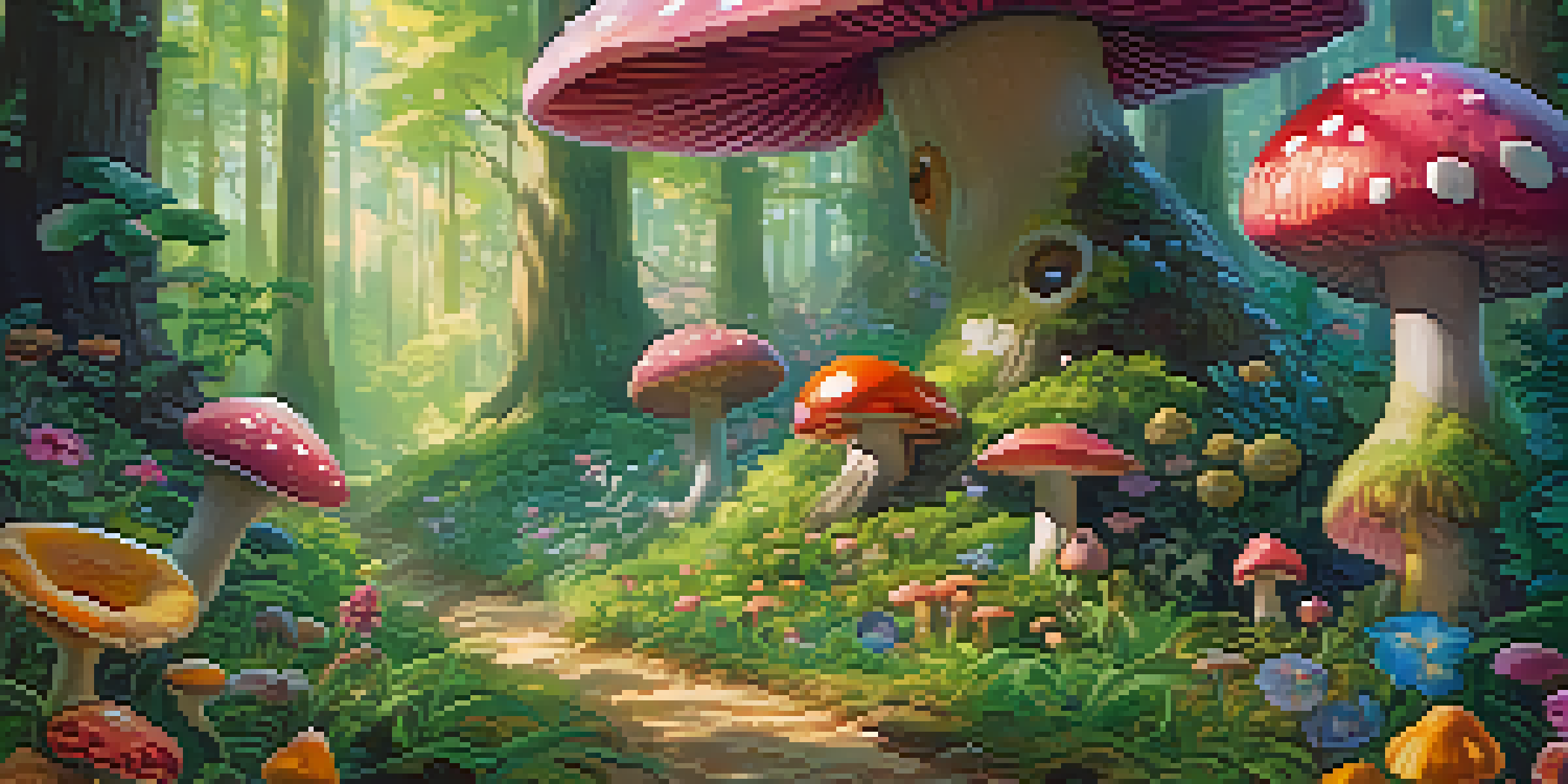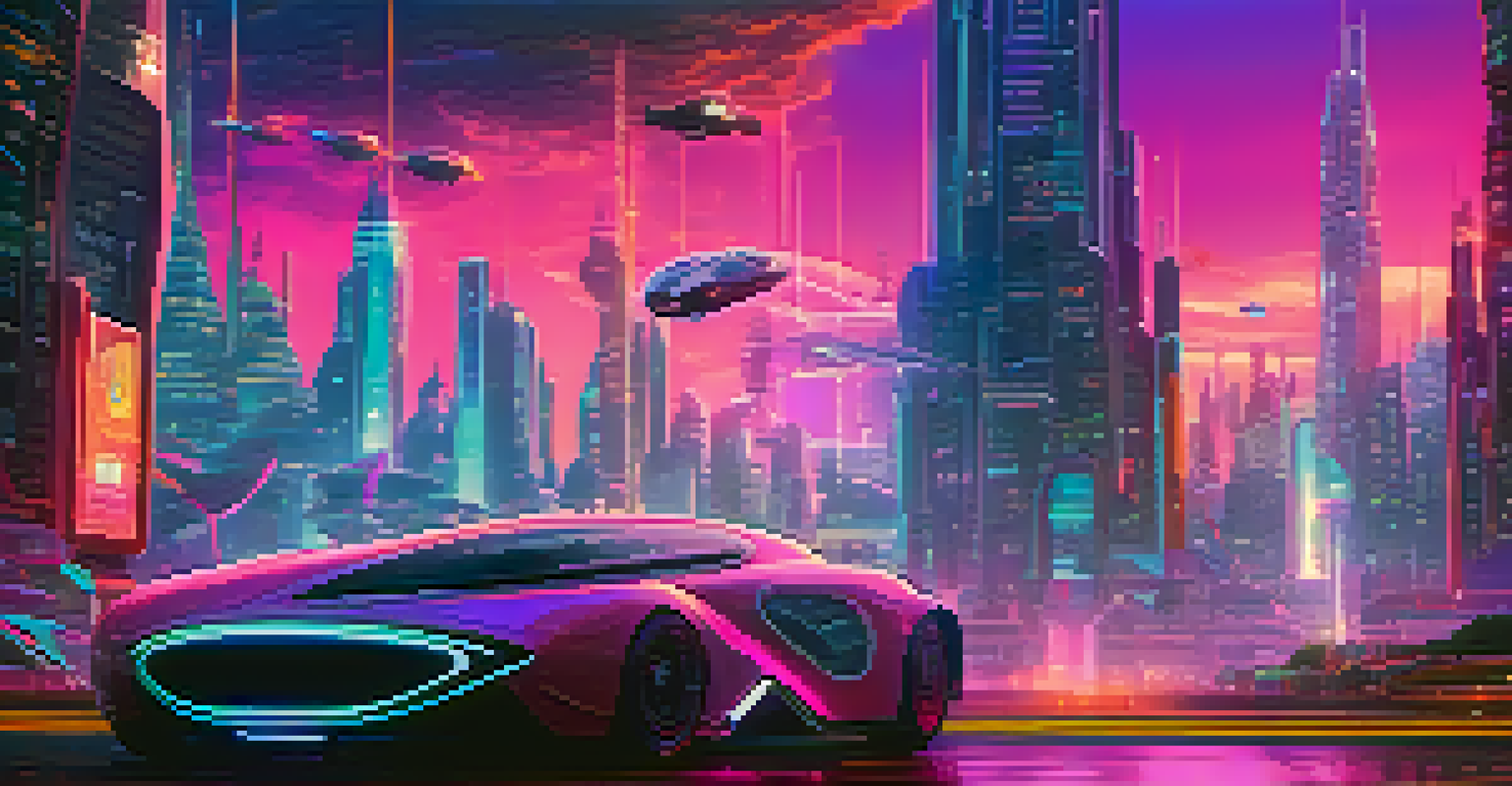Animation and Emotion: Enhancing Storytelling in Film

The Power of Animation in Storytelling
Animation brings stories to life in a way that live-action often can't. It allows for boundless creativity, where the only limit is the imagination of the creators. This medium provides a unique ability to express ideas and emotions visually, often resulting in a deeper connection with the audience.
Animation can explain whatever the mind of man can conceive.
For instance, the exaggerated movements of animated characters can amplify emotions like joy or sadness, making them more relatable. Think of how a character's expressive eyes or whimsical design can capture our feelings in a way that feels personal. Animation’s versatility means it can cater to a wide range of stories, from lighthearted comedies to profound dramas.
Moreover, animation can simplify complex narratives, making them accessible to audiences of all ages. By distilling stories into visual forms, it can convey themes of love, loss, and friendship in a way that resonates universally.
Emotion as a Storytelling Tool
Emotion is critical in storytelling, as it drives engagement and connection with the audience. In animation, the use of color, movement, and sound can evoke powerful feelings, allowing viewers to experience the story on a deeper level. When done effectively, these elements can pull at our heartstrings or inspire laughter.

Consider the use of vibrant colors to depict happiness versus muted tones to illustrate sadness. Animated films often utilize these visual cues to guide viewers’ emotional responses, enhancing their overall experience. For example, films like 'Inside Out' masterfully visualize complex emotions, making them comprehensible and relatable.
Animation Enhances Emotional Connection
Animation allows for boundless creativity, enabling deeper emotional connections with audiences through visual storytelling.
In essence, emotion in animation doesn’t just add depth; it serves as a bridge between the characters and the audience. This connection transforms a simple narrative into an emotional journey that stays with viewers long after the credits roll.
The Role of Character Design in Evoking Emotion
Character design is a pivotal aspect of animation that significantly influences emotional responses. The way a character looks—be it their shape, size, or facial expressions—can instantly communicate their personality and emotions. For instance, a large, round character often appears friendly, while sharp angles might suggest danger or hostility.
The best stories are those that are told with the heart, whether they are animated or live-action.
Take a character like WALL-E from the Pixar film of the same name; his large, expressive eyes evoke empathy and connection despite his mechanical nature. This design choice allows audiences to feel compassion for him, making his journey all the more impactful. In this way, character design acts as a visual shorthand for emotion.
When viewers can relate to a character’s emotions through their design, the storytelling becomes more powerful. The more we see ourselves in these characters, the more invested we become in their stories.
Sound and Music: Amplifying Emotional Impact
Sound and music play a crucial role in enhancing emotional storytelling in animation. The right score can elevate a scene, making it more poignant or exhilarating. For example, a soft piano melody can heighten a moment of sadness, while an upbeat orchestral piece can energize a joyful scene.
Moreover, sound effects can add layers of emotion that visuals alone might not convey. For instance, the sound of a heart beating can symbolize anxiety or excitement, drawing viewers further into the character's experience. This synergy between sound and visuals creates a more immersive storytelling environment.
Character Design Influences Empathy
The design of animated characters plays a crucial role in evoking empathy, as their visual features can instantly communicate emotions.
Ultimately, the combination of sound and animation can evoke emotions that resonate with audiences, making them feel as if they’re part of the story. This emotional engagement is vital, as it fosters a deep connection that lingers long after the film ends.
Cultural Influences on Emotion in Animation
Cultural background significantly shapes how emotion is portrayed and perceived in animation. Different cultures have unique storytelling traditions, which influence character development and emotional expression. For instance, Japanese anime often explores complex themes of existentialism and melancholy, while Western animations may focus on humor and adventure.
These cultural nuances can affect the emotional resonance of a story. An animated film may evoke feelings of nostalgia and connection for viewers from one culture, while another audience may interpret it differently based on their cultural lens. This diversity enriches the storytelling landscape.
By embracing various cultural perspectives, animation can create a broader understanding of emotions. This inclusivity allows viewers to experience a range of feelings and perspectives, making animation a truly global form of storytelling.
The Impact of Animation on Audience Empathy
Animation has a unique ability to foster empathy among audiences by presenting characters and their struggles in a relatable way. When viewers connect emotionally with animated characters, they can better understand their journeys and challenges. This connection can lead to a greater sense of empathy towards real-life situations.
For example, films like 'Zootopia' tackle social issues through animated characters, helping audiences see the world from different perspectives. By experiencing the characters' emotions, viewers may develop a deeper understanding and compassion for those facing similar challenges in reality.
Cultural Nuances Shape Emotional Resonance
Cultural influences significantly affect how emotions are portrayed in animation, enriching the storytelling experience for diverse audiences.
Ultimately, animation serves as a powerful tool for empathy-building. It encourages audiences to reflect on their own experiences and the experiences of others, paving the way for meaningful conversations and connections.
Future Trends: Emotion in Animation
As technology continues to evolve, the emotional depth of animation is expected to grow even further. Advancements in CGI and virtual reality are opening new avenues for storytelling, allowing creators to craft more immersive emotional experiences. This could mean even more nuanced characters and intricate narratives that resonate with audiences on a deeper level.
Moreover, the rise of interactive animation, where viewers can influence the story, presents new opportunities for emotional engagement. Imagine being able to choose how a character reacts in a pivotal moment—this could lead to a more personalized emotional journey.

As we look to the future, the integration of technology and storytelling in animation promises to enhance the emotional impact of films. This evolution will likely continue to captivate audiences and enrich the storytelling landscape for years to come.